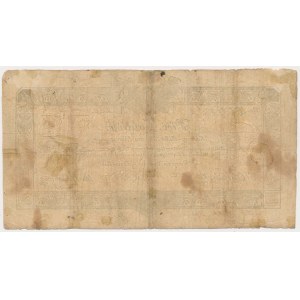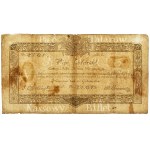Without the stamp of the Liquidation Commission on the reverse - very rare.
The Commission's stamp on the back signified the transfer of a banknote for redemption, in order to settle dues after the liquidation of the Principality.
Without the stamp, those banknotes that were not handed over for settlement remained in private holdings, presumably through forgetfulness as uncovered "papers." And while such "forgetfulness" at the lowest denomination of 1 Thaler still happens, at 5 Thalers they are rare. However, this was a significant value, and as soon as there was a chance to recover it - in whole or in part - it was scrupulously taken advantage of, surrendering the bill to the Central Liquidation Commission.
Redemption of the items presented to the Liquidation Commission, however, never took place.
Nowadays, banknotes with a stamp can be treated as currencies with a completely different status than those without a stamp.
With the stamp are those that have returned to the market from the Commission's stock. Unstamped are those that actually remained on the primary market from circulation, and these are much fewer in number.
Definitely recommended due to their high rarity, regardless of their state of preservation.
The condition of the present one is natural, with no wet preservation, and only with old, dry parchment understamps on the back. Visually as seen in the photos. Quite correct, especially from the obverse, although with rust discoloration in the paper (boxing).
In the unstamped version, an item missing from many collections.












